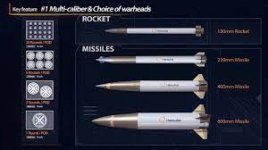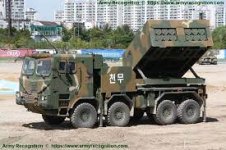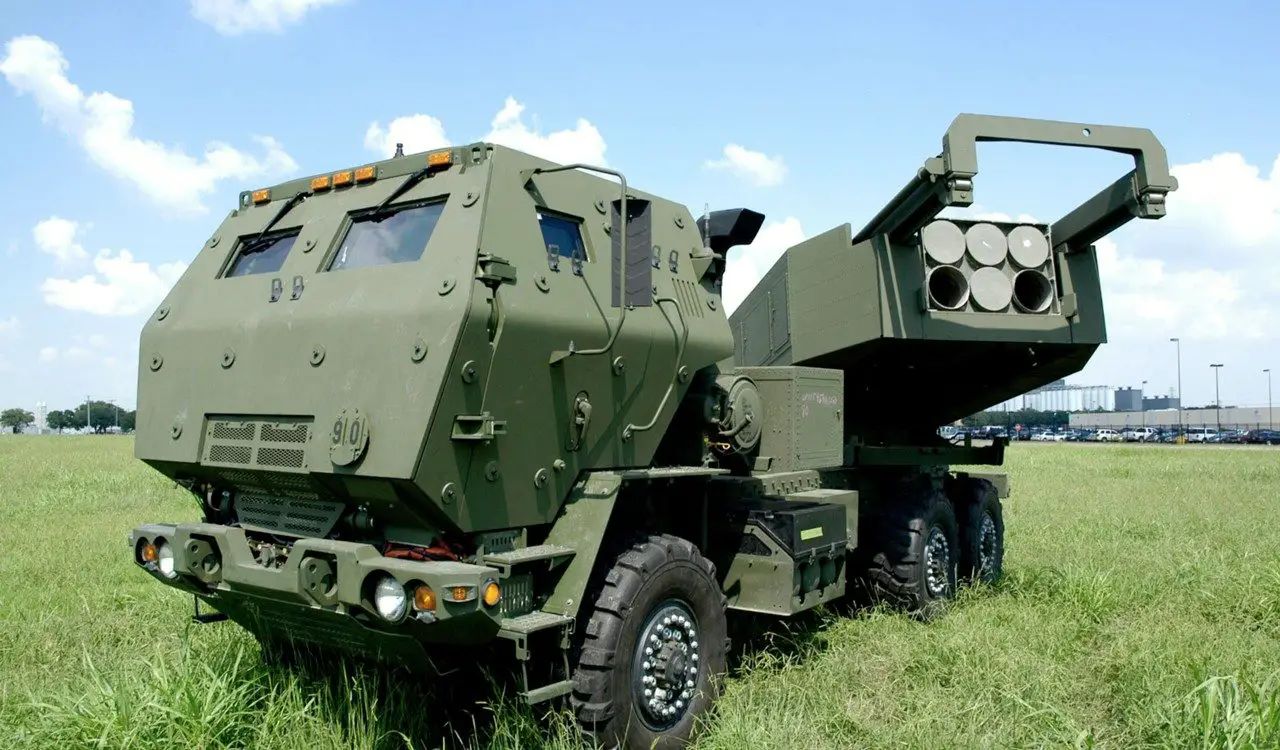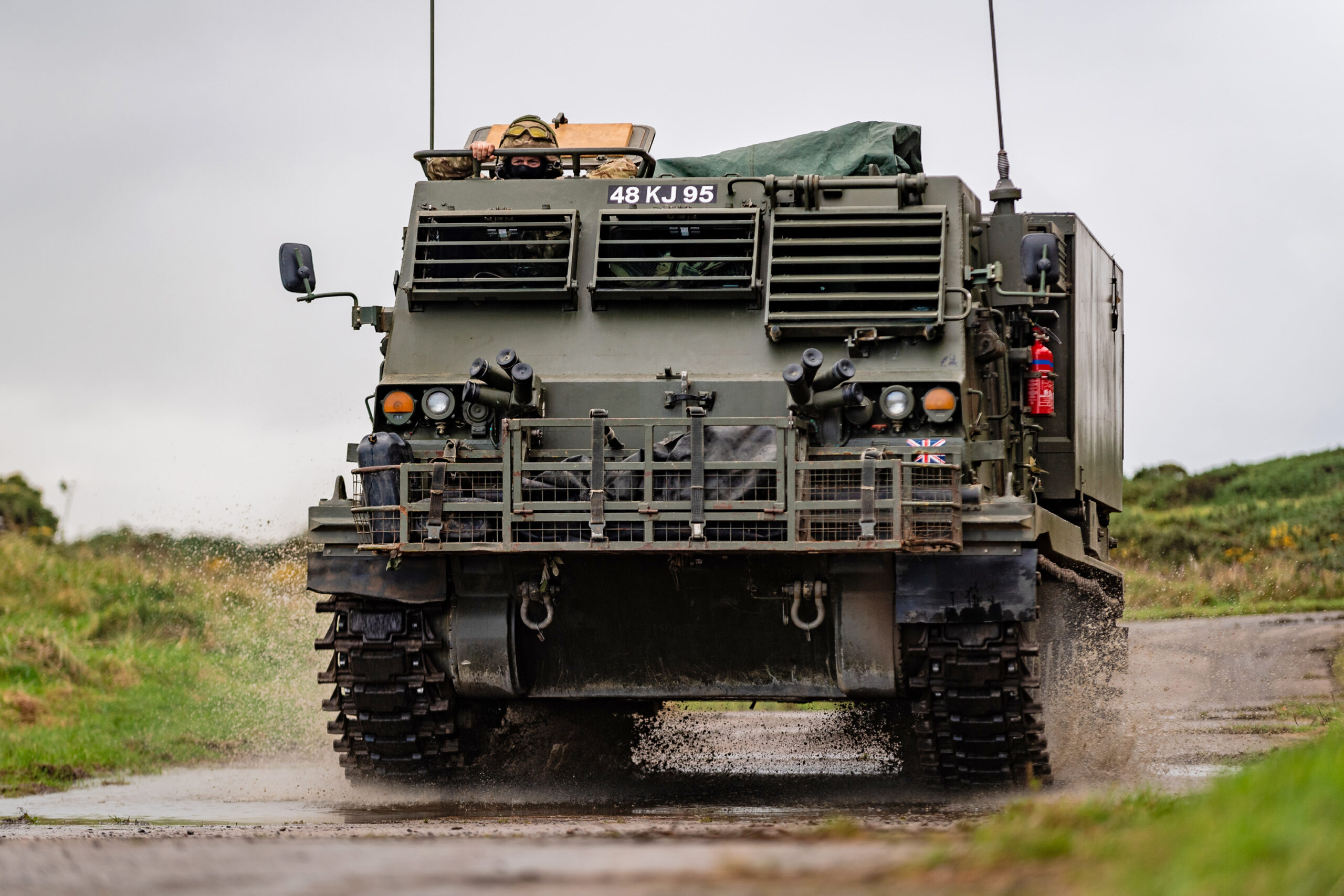An Obscure Israeli Rocket System May Beat the Almighty HIMARS at Its Own Game
These rocket launchers are more flexible than the U.S.'s wonder weapon. But are they better?
BY
SÉBASTIEN ROBLINPUBLISHED: APR 10, 2023
SAVE ARTICLE
The Netherlands is seeking to re-introduce a rocket artillery with a range exceeding 43 miles, a capability its armed forces retired in the 2000s. And it’s bucking the trend of many NATO allies in the process by turning to the more obscure, Israeli-built PULS (Precise and Universal Launch System) instead of the U.S.’s M142
HIMARS system. HIMARS rose to fame after its dramatic debut in the war in Ukraine last summer.
Dutch defense secretary Christophe Van der Maat
presented a brief explaining the decision:
“In comparison, with HIMARS, more precision guided missiles are delivered within budget. PULS also has greater operational sustainability because it carries more missiles. The PULS rocket artillery system also has open architecture making it suitable (in the near future) for [new types] of ammunition from European producers. This contributes to increasing the European strategic autonomy.”
Not only were both the launchers and their rocket ammunition found to be much cheaper, but the Israeli weapons could be delivered late 2023 through 2026, while HIMARS would only arrive “significantly later.”
The High Mobility Artillery Rocket System (HIMARS) is a 6x6 truck that can mount a pre-loaded pod of six 227-millimeter M31 GMRL rockets that can be guided to hit targets up to 50 miles away very precisely using GPS coordinates—like a precision air strike minus the planes. That’s proven handy for Ukraine, which
doesn’t have air superiority. The 17-ton M142 is a more transportable cousin to the older tracked 26.5-ton M270 MLRS, which carries two of the same type of rocket pods.
The M142 can also launch a single MGM-140 ATACMS tactical ballistic missiles with a range of 190 miles.
In February, the U.S. had authorized the Netherlands
to buy 20 M142 HIMARS launchers, 77 loaded rocket pods, ATACMS missile pods, and 17 support vehicles for $670 million. Passing up HIMARS may not have been an easy choice, given the commonality it offered with M270 and HIMARS systems used by NATO allies. The Netherlands, in fact, formerly owned nine M270s itself, meaning it would have some transferrable familiarity with HIMARS.
But price was undoubtedly a big factor in PULS’s favor, with the Israeli contract
likely valued at $133 million for 20 launches, as well as missiles and rockets for both combat and training use and ammo-resupply vehicles—roughly one-fifth the cost of the U.S.’s proposed HIMARS sale. The Royal Netherlands Army plans to form two batteries of eight launchers, with another four set aside for training.
However, van der Maat’s report shows the Dutch are setting aside €515.3 million for the procurement, including for potential cost overruns, delays, inflation, and to pay for training simulators, truck integration, communication links, spare part stocks and so forth. The Dutch government also projected operating costs over 15 years will total €168 million.
The Netherlands will initially receive four unmounted PULS launchers in 2023. These will be used for training, and for the engineering and development of their integration onto domestically-built Scania-Gryphus 8x8 trucks already acquired under the
DVOW program.
The launchers will then be installed in 2025 or 2026, along with Dutch-specific secured command-and-control systems and datalinks. After entering operational service, Amsterdam plans to fund a Phase 3 upgrade, in which it develops and installs additional customized fire control systems and supports new European-built rockets/missiles “with greater range.”
The Netherlands won’t be the
only NATO operator of PULS as, in January, Denmark ordered eight PULS systems, too, which have been seemingly supplied with
$70 million worth of Accular-122 rockets (see below). Germany may also be leaning toward a PULS buy, as German firm KMW has
partnered with Elbit on rocket artillery. Having nearby allies using the same systems can facilitate efficiencies by maintaining a “use group” that pools spare parts, training and munitions.
But PULS has benefits other than price setting it apart from compared to HIMARS. Primarily, it’s way more flexible.
The Age of HIMARS
Since 2022, the U.S. has donated at least 38 HIMARS systems to Ukraine, armed with GMRLS rockets but not ATACMS missiles. These made a big splash when they became operational, with long-distance strikes in July and August of 2022 evaporating several Russian artillery ammunition depots and killing several high-ranking officers in their command centers. This likely contributed to the petering out of Russia’s initially dangerous summer offensive.
Even now, there’s still no imagery confirming
the loss of even one HIMARS launcher, despite Russian claims to have destroyed more than have actually been delivered (and Russia’s military
has provided visual proof of the destruction of
many other Western artillery systems.) HIMAR’s mobility and reach (combined with decoy targets) has apparently frustrated Russian attempts to hunt them down with
kamikaze drones or laser-guided artillery rounds.
These outcomes made the case for HIMARS’s utility, even if they were proven unsustainable as Russian forces withdrew their logistical bases and HQs out of range. Shockingly, Russia’s large rocket artillery arms lack this kind of precision munition for operational use, though its does effectively employ Krasnopol laser-guided howitzer rounds.
Russia’s invasion and HIMARS’s early success have resulted in a queue of new order for HIMARS, including Australia (20), Estonia (6), Latvia (6), Lithuania (8) and Poland—which increased an earlier order of 20 to option purchase of up to 486! Countries with ongoing orders predating the war in Ukraine include Taiwan (11 to 29) and Romania (54),
PULS vs. HIMARS
The case for PULS as an alternative is that it can do many of the same things as HIMARS, for less money and with added functionality. And it mounts two rocket-launching pods to the HIMARS’s one by default. After firing, a new pod can be slotted in under 10 minutes.
Unlike HIMARS, PULS is just a launcher, which can be bolted on a variety of vehicles and allows clients to fit them to those already integrated in their logistics. PULS’s progenitor was the Israeli Military Industry’s 6x6 Lynx multiple-rocket-launcher truck. The IDF’s artillery branch also operates PULS on Oshkosh 8x8 HEMTT trucks under the designation
Lahav (blade).
But more importantly, PULS can mount
six different classes of guided and unguided ammunition, simply slotted in using pre-loaded pods.
On the light end, it can carry two sealed pods each stuffed with 18 122-millimeter rockets, a caliber used across the globe in Soviet-origin BM-21 Grad rocket artillery. Cheaper unguided Grad rounds can attack targets up to 25 miles way.
The crew can alternately employ an Israeli GPS-guided AccuLAR-122 rocket, also known as
Romach (“Lance/spear”), which were procured in 2017 for Israel’s customized M270
Menatetz (“Shatterer”) launcher vehicles.
This has slightly shorter range of 22 miles, but each shot lands on average within 5-10 meters of its target, making it effectively a mini-HIMARs rocket that could be appealing when seeking to minimize risk of collateral friendly/civilian casualties. A fire mission can be executed within one minute of reception, and it comes with both fragmentation and wall-penetrating warheads.
The firepower can be amped up with alternate launch pods, each loaded with 13 160-millimeter rockets (26 in total) from the Israeli LAR-160 rocket system. These have a range of 28 miles, and also come in the guided Accular-160 model with a range of 25 miles.
To hit more distant targets, PULS can mount two pods, each with four 306-millimeter EXTRA guided rockets with 93 mile ranges. To be fair, HIMARS will in a few years match this range, as new GMLRS-ER variant of its 227-millimeter rocket enters production this year.
To go even further, PULS can launch the ATACMS-like Predator Hawk tactical ballistic missile with a range of 186 miles, similar to the U.S. ATACMS. This can hit targets at maximum range in 8 minutes (averaging Mach 1.8) with its 308-pound warhead. Both the EXTRA rocket and Predator HAWK also land on average within 10 meters of target.
Israel’s PULS units can also launch the subsonic Delilah cruise missile, flying much lower and slower, out to 155 miles and with even greater accuracy. The Delilah, however, doesn’t seem to be up for export.
Side by side, PULS can deliver eight 300-millimeter rockets compared to HIMARS’s six 227-millimeter ones. Or it can carry four tactical missiles instead of HIMARS’s one.
And compared to Soviet-era artillery systems, the PULS can deliver effects similar to the
BM-21, BM-27 and BM-30 rocket systems as well as the older
OTR-21 Tochka ballistic missile.
That means the same launcher can be used for a wide range of different missions, from precision strikes targeting depots, air defense and HQs behind enemy lines, to point targets near the frontline and old-school saturation bombardments across a broad area.
HIMARS, and the beefier M270, still have other factors in their favor. They will both be compatible with a forthcoming longer-range Precision Strike Missile under development. They have also been battle tested in the high intensity conflict in Ukraine, following successful deployment of HIMARS in Iraq and Syria in the anti-ISIS war.
The EXTRA and LAR-160 rockets have seen
some combat use. Georgian LAR-160s reportedly proved effective hitting Russian supply convoys during
2008 Russo-Georgian war. This system and the EXTRA rocket were also used by Azerbaijani forces during the 2020 Nagorno-Karabakh war. Both sides extensively used rocket artillery, including LAR-160s, for
indiscriminate long-distance attacks on civilians, including use of cluster bombs.
Strategy and Politics
Major weapon buys are inevitably fraught with politics. Notably, Israel will
not authorize direct sale or third-party donation of PULS or other defense products to Ukraine, fearing Russian retaliation in the forms of arms transfers to Iran or Syria.
Amsterdam is hardly spurning Uncle Sam, though—the PULS purchase comes alongside announced plans to purchase
AGM-158B JASSM-ER stealth cruise missiles for the Netherland’s planned fleet of 52 F-35 stealth fighters, and
Tomahawk naval cruise missiles for
Dutch submarines and
De Zeven Provincien-class frigates.
These big buys will be funded with a temporary 40 percent surge in defense spending, amounting to €5 billion euros per a
2022 Defense White Paper.
The Dutch military’s focus on these long-range weapons shows how war in Ukraine has persuaded many policy makers of the importance of diverse, conventional long-distance strike weapons in 21st century warfare. Such capabilities had ample precedents, but widespread availability of GPS guidance, the
decline of arms control treaties, and hugely improved satellite and
drone reconnaissance for target acquisition make such arms more effective, affordable, and accessible than before.
















